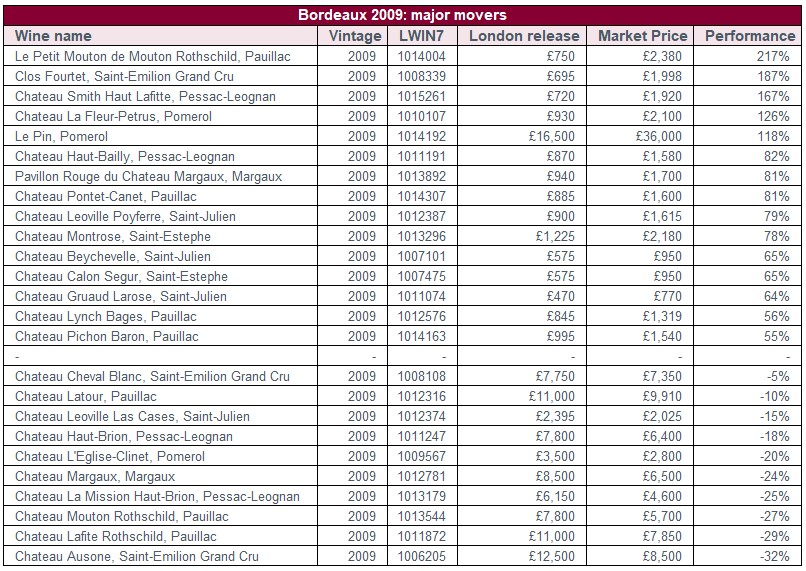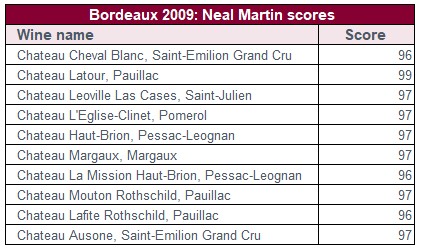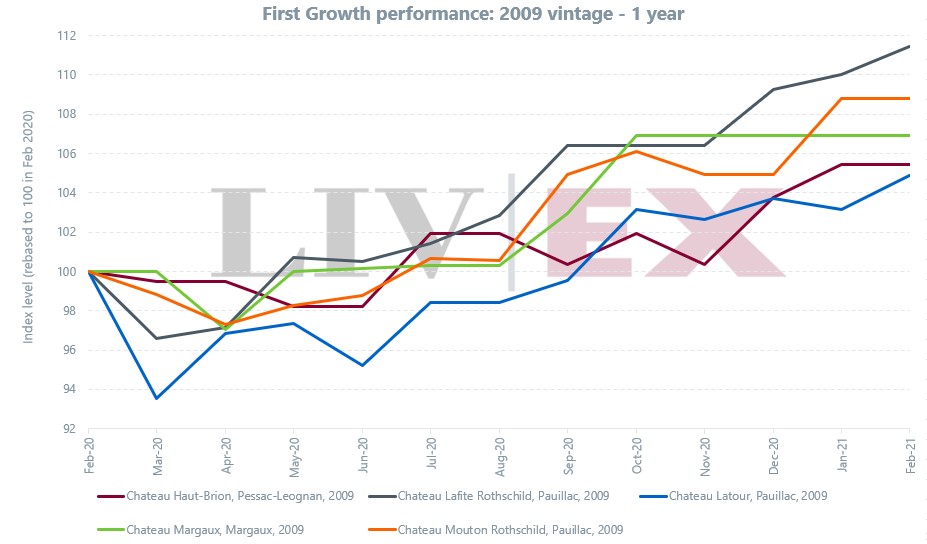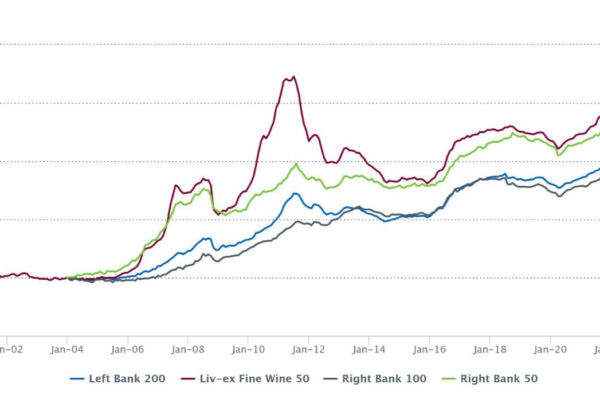
With 2021 bringing in another Year of the Ox in Asia, wines from a previous ‘Ox year’, the 2009s, are back in the spotlight. And having under-performed for many years post-release is momentum building behind the First Growths?
Released at record high prices, many of the big Bordeaux labels struggled to maintain those levels afterwards, especially in the wake of the market’s nosedive in 2010. And while many leading domains remain below their release price the fortunes of the First Growths has looked distinctly more positive over the last year.
As examined in a recent blog post, all manner of leading labels from the 2009 vintage have seen an increase in trade on the Liv-ex platform but most especially those from Bordeaux. The 2009 clarets are currently the top-traded wines on the Exchange so far this year.
The 2009 vintage was one of Bordeaux’s famous blockbusters and the most expensive set of wines ever offered en primeur at the time (being eclipsed the following year by the equally lauded 2010s).
Released at the peak of the market, however, the wines’ reputations have held up better than their prices in many cases.
The drop in prices seen by the 2009s and 2010s in the decade since their release is a well-known narrative although it has not been a universal disaster for all labels.
There are five 2009 Bordeaux wines that have seen a triple-digit increase in their market price since they were first offered.
Leading the pack is Mouton Rothschild’s second wine, Le Petit Mouton, which has risen 217% post-release to £2,380 per dozen.
Clos Fourtet, Smith Haut Lafitte and La-Fleur Petrus are three other wines that were sub-£1,000 on release which have risen over 100%, while Le Pin with an increase of 118% to £36,000 per dozen shows that a high starting price is not always a hindrance to future success.
Meanwhile, Margaux’s second wine Pavillon Rouge, Haut-Bailly, Montrose, Pontet-Canet, Beychevelle, Calon-Segur and others form a clutch of estates (several that were part of Robert Parker’s ‘Magical 20’ 100-pointers) that have risen over 50% or more.
Furthermore, on the Bordeaux 500 index, the 2009s are up 3.9% over the past year, second only to the 2010s (7.7%) and better than the 2000, 2005 and 2016s.
Nonetheless, Bordeaux’s first growths from both banks of the Gironde continue to languish in the red. They are bookended by St Emilion’s two Grand Cru Classe ‘A’ labels; Cheval Blanc which is down 5% on its release price and Chateau Ausone which is down 32%.
In the bottom 10 with them are the five Medoc first growths, as well as L’Eglise-Clinet, Leoville Las Cases and La Mission Haut-Brion.
Latour, Lafite and Ausone have failed to punch back above the £10,000 per case mark in recent years – though Latour is closest currently at £9,910 a dozen.
All of the 10 worst-performing wines have strong scores, however, rated 96 or more by Neal Martin for Vinous in 2019.
 Although he flirted with giving Latour a full 100 and considered it, “one step ahead of the other chateaux” in 2009, he also considers the 2000 and 2010 Latours to be a small notch above their ’09 counterpart.
Although he flirted with giving Latour a full 100 and considered it, “one step ahead of the other chateaux” in 2009, he also considers the 2000 and 2010 Latours to be a small notch above their ’09 counterpart.
Another wine he thought “could at least orbit Planet Perfection” was Margaux, while, “wondrous examples of the vintage you cannot own too much of” included: Ausone, Cheval Blanc, Haut-Brion, L’Eglise-Clinet, La Mission Haut-Brion, Leoville Las Cases and Mouton Rothschild.
First Growths from a strong vintage backed up with solid scores are unlikely to stay off the boil for long.
Indeed, the performance of Lafite and company over the past 12 months has been one of positive progress. Having reached their first 10 year milestone are the 2009 heavyweights emerging from their former pricing funk?




